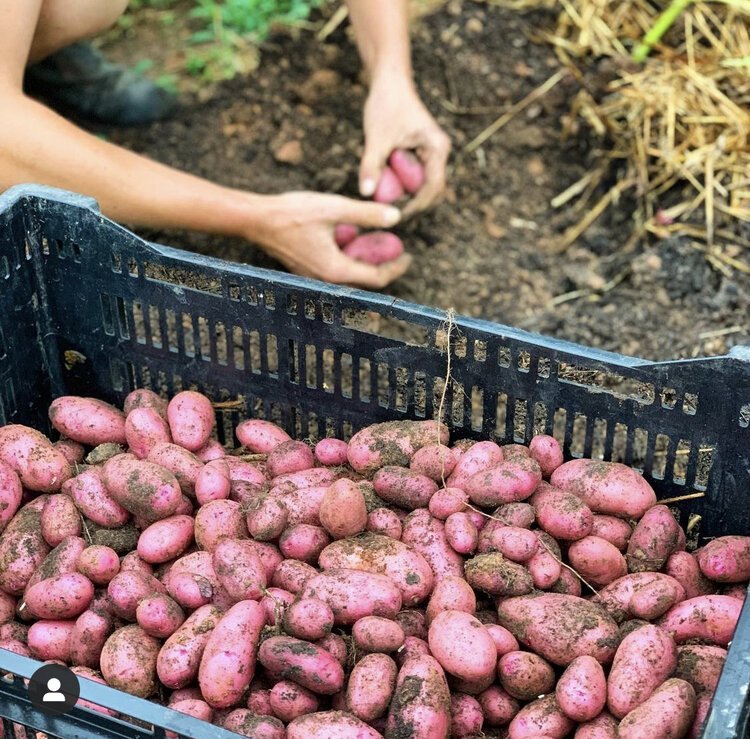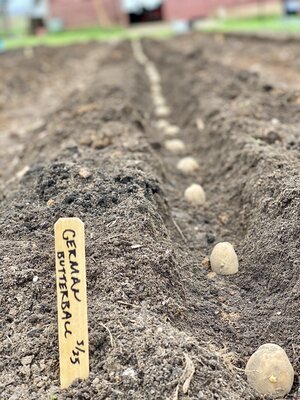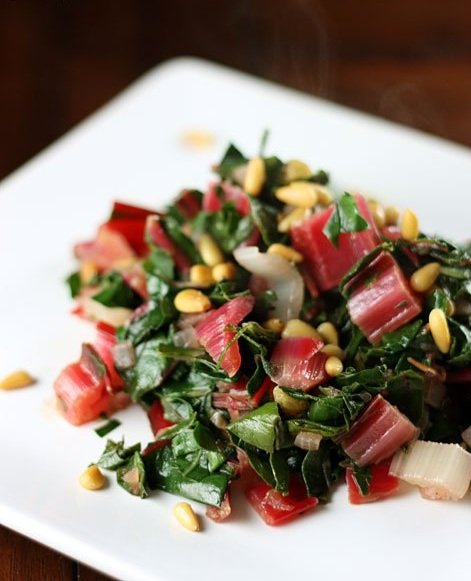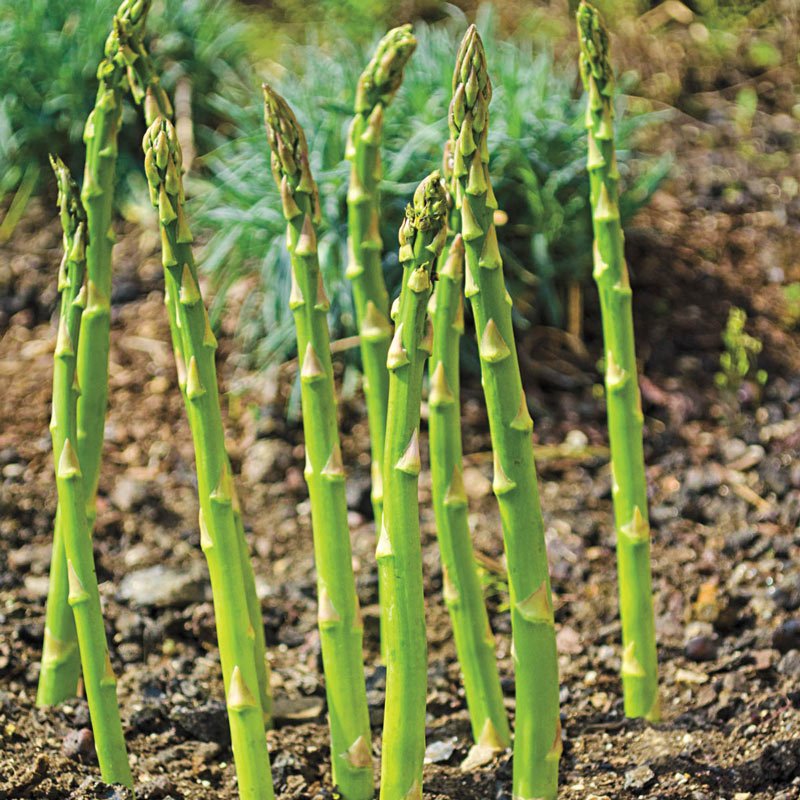Farm Notes
Goodness gracious, it has been a WEEK. Last Saturday I spent pretty much all day scurrying around outside in the wind (and some snow flurries) making sure all our veggie babies were covered for the extremely cold (18F!) overnight temperatures. Thankfully, when I peeked under all our row cover on Sunday morning, I found that our veggies made it through with very little damage, which I am incredibly grateful for. I know that a lot of farmers in the area weren’t so lucky, and it’s a testament to how resilient farmers have to be in order to do this work.
With the freezing temps (hopefully) behind us, throughout this week we’ve been planting like crazy! On Tuesday we got many of our brassica plants in the ground – 3 kinds of kale, broccoli and cabbage. Plants in the brassica family prefer the cooler spring weather, so we plant them now so that we’re able to harvest them in May before the summer heat arrives.
Yesterday we planted our alliums (red and yellow onions, leeks, and scallions) and our potatoes. It’s apparently good luck to plant your potatoes on St. Patrick’s Day, so hopefully our taters will be filled with good juju, and in a few months we will be rolling in delicious potatoes for all our CSA members. Potatoes are one of my favorite veggies to grow (and hands down the most fun to harvest) and now is a great time to plant them, so today I’m sharing all my tips for growing potatoes!
BEFORE YOU PLANT
1) Source your seed potatoes from a reputable local farm/garden store (for local friends, we source ours from Country Farm & Home in Pittsboro). While you technically can plant potatoes from the grocery store, your best bet is to buy seed potatoes that are specifically bred to be used to for growing potatoes (as grocery store potatoes are often treated to prevent sprouting).
2) It’s recommended to “green sprout” your seed potatoes a 1-3 weeks before you plant them, which means putting your whole seed potatoes in a box and leaving them in a warm (70-85 F) and dark place to encourage their eyes to begin sprouting. Be careful when handling to avoid breaking off sprouted eyes.
3) If your potatoes are especially large (over 4 ounces) and have lots of eyes, you can cut them into smaller pieces, which allows you to get more out of each potato. Think of the size/weight of a chicken egg as your ideal size, and try to have at least 2 eyes per seed piece. If you are going to cut your potatoes, cut them 2-3 days before you plant, to allow the cut part of the potato to heal over (to avoid the potatoes from rotting in the ground).
PLANTING YOUR POTATOES
1) Prepare the soil by adding compost and any other amendments to you bed. Dig a trench in your bed about 4”-6” deep.
2) Lay seed pieces eyes pointing up in the trench spaced 8”-12” apart for standard potato varieties and 12”-18” apart for fingerling varieties.
3) Cover potatoes with a few inches of soil, leaving a bit of a trench in the bed (because over time, you’ll want to “hill” your potatoes with additional soil from the sides of your trench).
TENDING YOUR POTATOES
1) Generally, potatoes need between 1-2 inches of water per week, which can be provided by rain or you to make up the difference by watering.
2) You should “hill” your potatoes 2-3 times per season by loosening surrounding soil in the bed and pulling it up around the leaves and stems. Try to hill before the stems grow too long and start to flop over. You should pull between 2”-6” new soil up around the plants each time you hill.
HARVESTING YOUR POTATOES
1) When buying your seed potatoes, make sure to check the recommended days to harvest for each variety. Some potato varieties will be ready to harvest in 60-70 days, while others will need 90-100 days to fully mature.
2) In general, potatoes are harvested after they go to flower and once the foliage begins to die back and turn brown. I’ll cover potato harvesting in more detail when that time comes this June!
I hope this is helpful! If you have any other questions about growing potatoes, feel free to send me a message. If you are short on garden space, you can also grow potatoes in grow bags! Here’s a tutorial if you’re interested in the grow bag method.
PS – CONGRATS to Stephanie Campbell, the winner of this month’s giveaway of a Cobra gardening tool!
Kitchen Notes
If you, like me, are constantly looking for recipes that feel and taste *special* but don’t require crazy ingredients or equipment or copious amounts of time to make – then THIS is going to be your new favorite recipe (adapted from Molly Baz’s cookbook, Cook this Book). All you do is roast a few sweet potato halves, then top it with a suuuuper simple + flavor-packed peanut-chile sauce and a little feta cheese and you’re golden. I could eat this dish as meal in itself over a bed of greens, but it also makes a great side to bring to a dinner party. Happy cooking!
Roasted Sweet Potatoes with Peanut-Chili Sauce & Feta
INGREDIENTS
4 small sweet potatoes (about 2lbs total)
1/2 cup plus 2 tablespoons olive oil
Kosher salt
1/2 cup roasted, unsalted peanuts
1 tablespoon honey
1 teaspoon red pepper flakes
1 teaspoon sweet paprika
2 garlic cloves, minced
2 limes
4 ounces feta cheese, cut/crumbled into bite sized pieces (optional)
PREPARATION
Preheat your oven to 425F.
Roast the sweet potatoes: Cut the sweet potatoes in half lengthwise. Place on a rimmed baking sheet and drizzle with 2 tablespoons olive oil and season with 1.5 teaspoons salt, tossing with your hands to evenly coat. Arrange cut-sides down on your baking sheet. Transfer to the oven and roast until tender when pierced with a knife and charred on the undersides, 25-35 minutes. Transfer the roasted sweet potatoes to a platter.
While the sweet potatoes roast, make the peanut-chile sauce: Roughly chop the 1/2 cup peanuts and place in a small pot and cover with 1/2 cup olive oil. Cook over medium heat, stirring often, until the peanuts are golden brown, 4-5 minutes. (A note that even after you turn off the heat, the oil will still be very hot, so if the peanuts are getting too brown, use a slotted spoon to scoop them out into a separate bowl until the oil cools a bit.)
Add the honey, red pepper flakes, and paprika to the hot oil + peanut mixture and stir to combine. Allow the oil to cool for a few minutes then add the minced garlic (it will sizzle a bit, which is good.. the oil is gently cooking the garlic).
Spoon the yummy peanut-chile sauce over your sweet potatoes, top with feta (if using), and a squeeze of lime. Enjoy!
Today’s Stats
Low temp: 59F
High temp: 76F
Sunrise: 7:23am
Sunset: 7:27pm
Moon phase: Full moon
Additional notes: Sunny and beautiful!

















